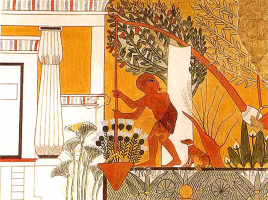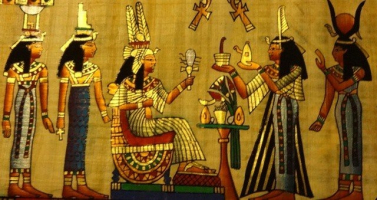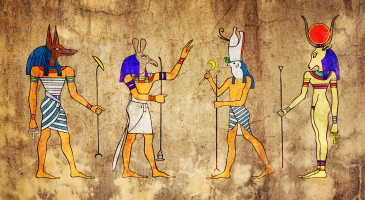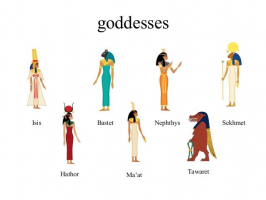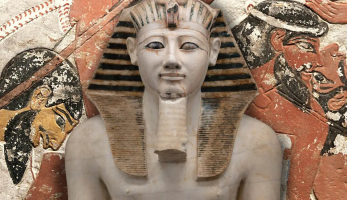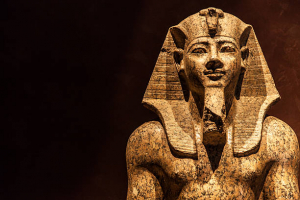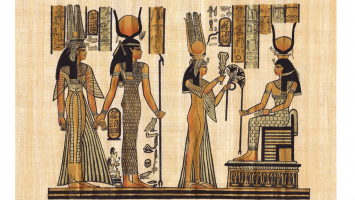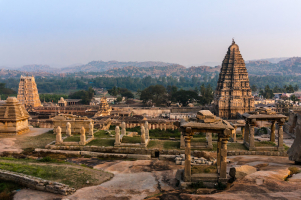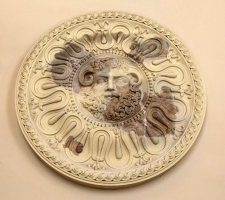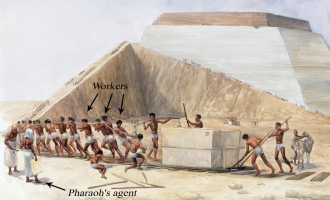Top 9 Ancient Egyptian Periods
Ancient Egypt was a civilization in ancient Northeast Africa, located in Egypt's Egyptian Nile Valley. Following prehistoric Egypt, ancient Egyptian ... read more...civilization culminated approximately 3100 BC with the governmental unification of Upper and Lower Egypt under Menes. Join us in this article if you are also interested in researching historical occurrences. This page will introduce you to the 9 Ancient Egyptian periods.
-
Prehistoric Egypt and Predynastic Egypt span the era from the earliest human settlement until the start of the Early Dynastic Period circa 3100 BC, commencing with the first Pharaoh, Narmer for some Egyptologists, Hor-Aha for others, with the name Menes probably used for one of these kings.
"Predynastic Egypt" is traditionally described as the period from the end of the Neolithic period, commencing around 6000 BC, until the end of the Naqada III period, around 3000 BC. The dates of the Predynastic period were first established before substantial archaeological excavation in Egypt, and recent discoveries demonstrating relatively sluggish Predynastic growth have led to debate over when the Predynastic period ended. As a result, terms like "Protodynastic period," "Zero Dynasty," or "Dynasty 0" are used to refer to the section of the time that some consider to be Predynastic and others consider to be Early Dynastic.
The Predynastic period, one of the Ancient Egyptian periods, is often divided into cultural eras, each called after the location where a particular type of Egyptian town was unearthed for the first time. However, the same progressive growth that distinguishes the Protodynastic period is evident throughout the entire Predynastic period, and individual "cultures" must be viewed as primarily subjective divides designed to assist the study of the entire period, rather than as different entities. Because the silt of the Nile River was more heavily deposited in the Delta region, most Delta sites were fully buried long before modern times, the vast majority of Predynastic archaeological finds have been in Upper Egypt.
Period: c. 6000-3000 BC
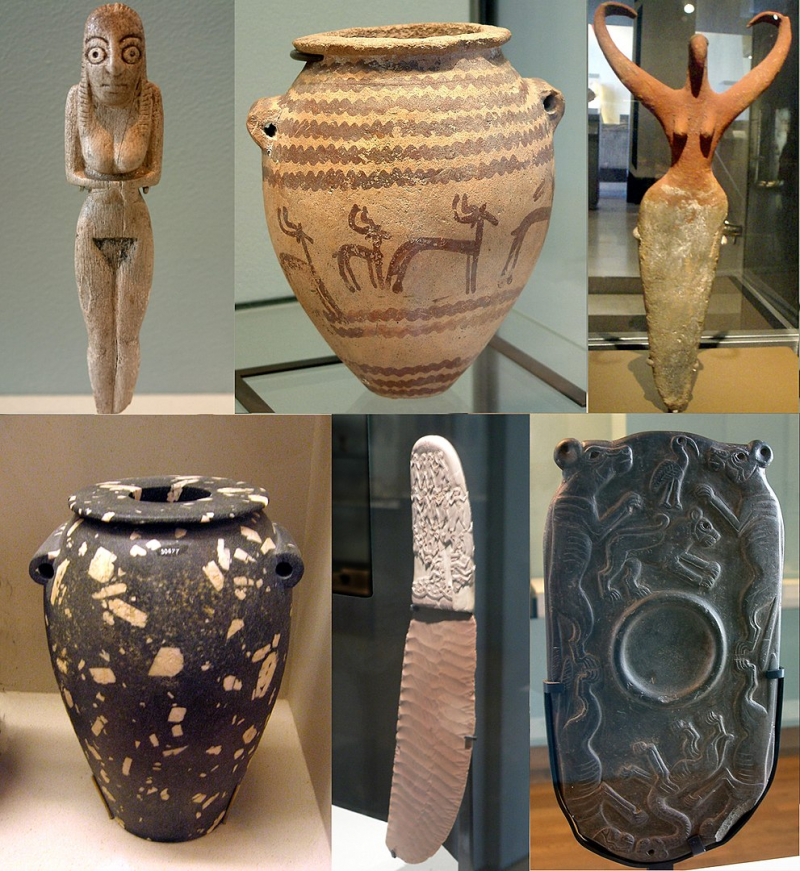
Artifacts of Egypt from the Prehistoric period -en.wikipedia.org 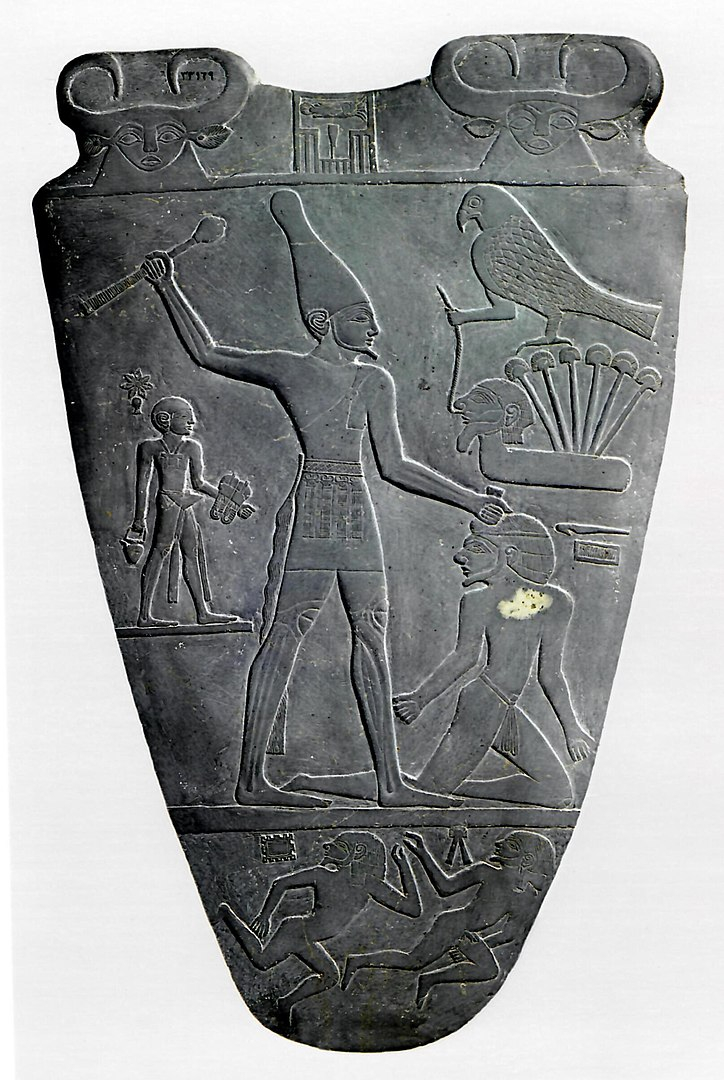
Verso of Narmer Palette -en.wikipedia.org -
The Early Dynastic Period, also known as the Thinite Period (from Thinis, the alleged hometown of its rulers), is the period of ancient Egypt that immediately followed the unification of Upper and Lower Egypt in around 3150 BC. It is widely accepted to cover the First and Second Dynasties, which lasted from the conclusion of Naqada III's archaeological civilization until around 2686 BC, or the beginning of the Old Kingdom. The Egyptian capital was relocated from Thinis to Memphis during the First Dynasty, and the unified land was controlled by an Egyptian god-king. In the south, Abydos remained the major seat of ancient Egyptian religion; throughout the Early Dynastic Period, the characteristics of ancient Egyptian culture, such as Egyptian art, Egyptian architecture, and many parts of Egyptian religion, took shape.
Prior to Egypt's unification, the country was settled with autonomous communities. With the early dynasties, and for much of Egypt's subsequent history, the land became known as "The Two Lands" (referencing Upper and Lower Egypt). The pharaohs built a national administration and appointed royal governors, and the central government's buildings were typically open-air temples made of wood or sandstone. The earliest Egyptian hieroglyphs exist just before this time, while little is known about the spoken language they represent.
Period: c. 3150–2686 BC
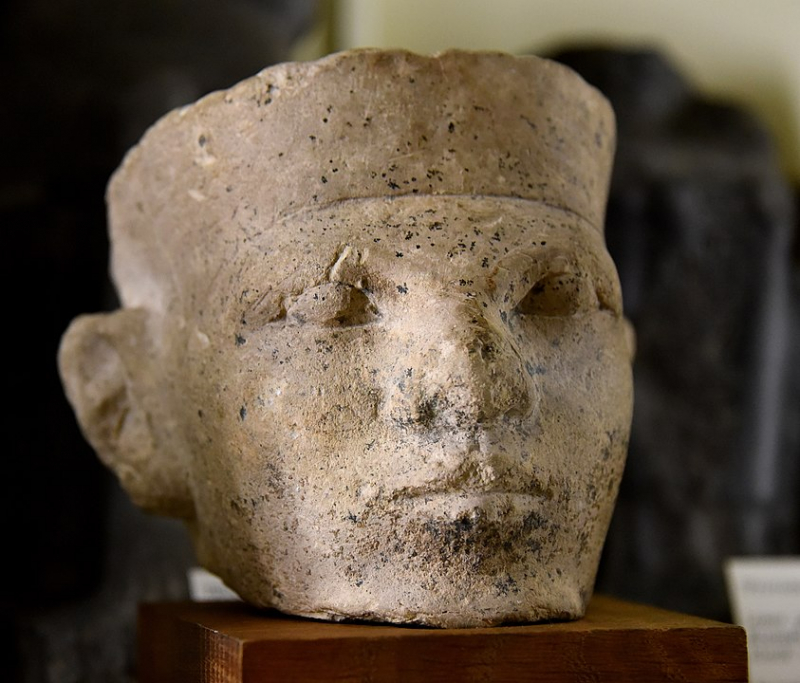
Limestone head of a king -en.wikipedia.org 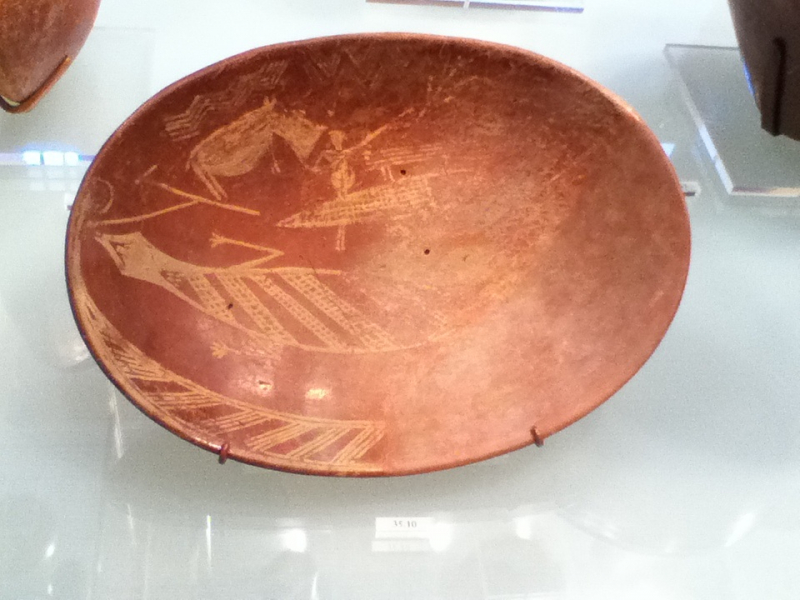
A plate created during the Early Dynastic period -en.wikipedia.org -
The Old Kingdom was a period in Egyptian history that lasted approximately 2700-2200 BC. It is also known as the "Age of the Pyramids" or the "Age of the Pyramid Builders" because it encompasses the reigns of the Fourth Dynasty's great pyramid-builders, such as King Sneferu, who perfected the art of pyramid-building, and the kings Khufu, Khafre, and Menkaure, who built the Giza pyramids. Egypt's first sustained pinnacle of civilization occurred during the Old Kingdom, the first of three so-called "Kingdom" periods (followed by the Middle Kingdom and the New Kingdom) that marked the high points of civilization in the lower Nile Valley.
The Old Kingdom is typically defined as the period from the Third to the Sixth Dynasties (2686–2181 BC). From the Fourth through the Sixth Dynasties of Egypt, information is scant, and historians describe the era's history as literally "written in stone" and essentially architectural in the sense that researchers have been able to construct history through monuments and their inscriptions. Egyptologists consider the Memphite Seventh and Eighth Dynasties of the Old Kingdom to be a continuation of the administration, which was centered in Memphis. While the Old Kingdom was an era of internal security and prosperity, it was followed by a period of discord and relative cultural decline known as the First Intermediate Period by Egyptologists. During the Old Kingdom, the King of Egypt (not known as the Pharaoh until the New Kingdom) became a living god who could demand his subjects' services and wealth.
The royal capital of Egypt was relocated to Memphis under Ruler Djoser, the first king of the Third Dynasty of the Old Kingdom, where Djoser founded his court. During his reign, a new age of construction began in Saqqara. Imhotep, King Djoser's architect, is credited with the invention of stone construction and the design of the step pyramid, a novel architectural form. The Old Kingdom is primarily known for the enormous number of pyramids built during this time period as burial sites for Egypt's kings.
Period: 2700-2200 BC
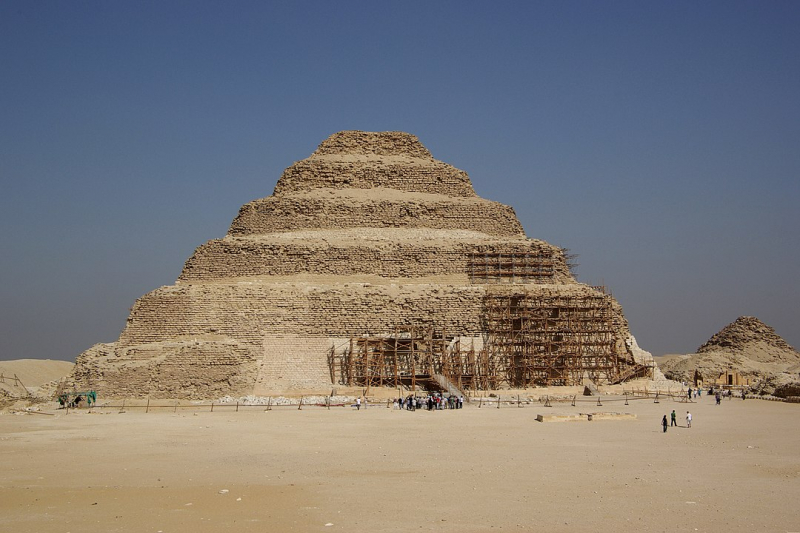
The Pyramid of Djoser at Saqqara -en.wikipedia.org 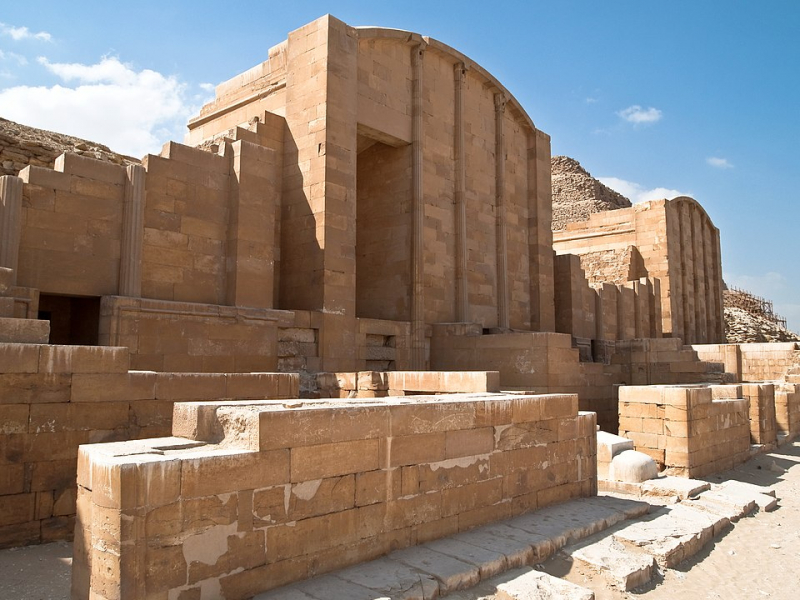
Temple of Djoser at Saqqara -en.wikipedia.org -
The First Intermediate Period, also known as the "black period" in Egyptian history, lasted around 125 years after the end of the Old Kingdom, from around 2181 to 2055 BC. It includes the Seventh, Eighth, Ninth, and Tenth Dynasties, as well as a portion of the Eleventh. Egyptologists Georg Steindorff and Henri Frankfort developed the name "First Intermediate Period" in 1926.
Local rulers began contending for territorial control and political influence after they were free of their allegiances to the king. By 2160 BC, monarchs in Herakleopolis dominated Lower Egypt in the north, while the Intef family, located in Thebes, controlled Upper Egypt in the south. As the Intefs' influence grew and their control expanded northward, a battle between the two opposing dynasties became unavoidable.
There is very little monumental evidence from this period, particularly from the beginning of the era. The First Intermediate Period was a turbulent time when Egypt's rule was largely divided between two rival power bases. One of the bases was located in Lower Egypt, in the Faiyum region, and the other in Upper Egypt, near Thebes. As a result of the alleged political upheaval, temples are said to have been pillaged and assaulted, the artwork was defaced, and royal statues were smashed or destroyed. The two kingdoms would eventually clash, leading to the Theban kings' conquest of the north and the reunification of Egypt under a single ruler, Mentuhotep II, during the second half of the Eleventh Dynasty. The northern Theban army led by Nebhepetre Mentuhotep II finally overcame the Herakleopolitan monarchs around 2055 BC, reuniting the Two Lands. They ushered in the Middle Kingdom, a period of an economic and cultural renaissance.
Period: 2181–2055 BC
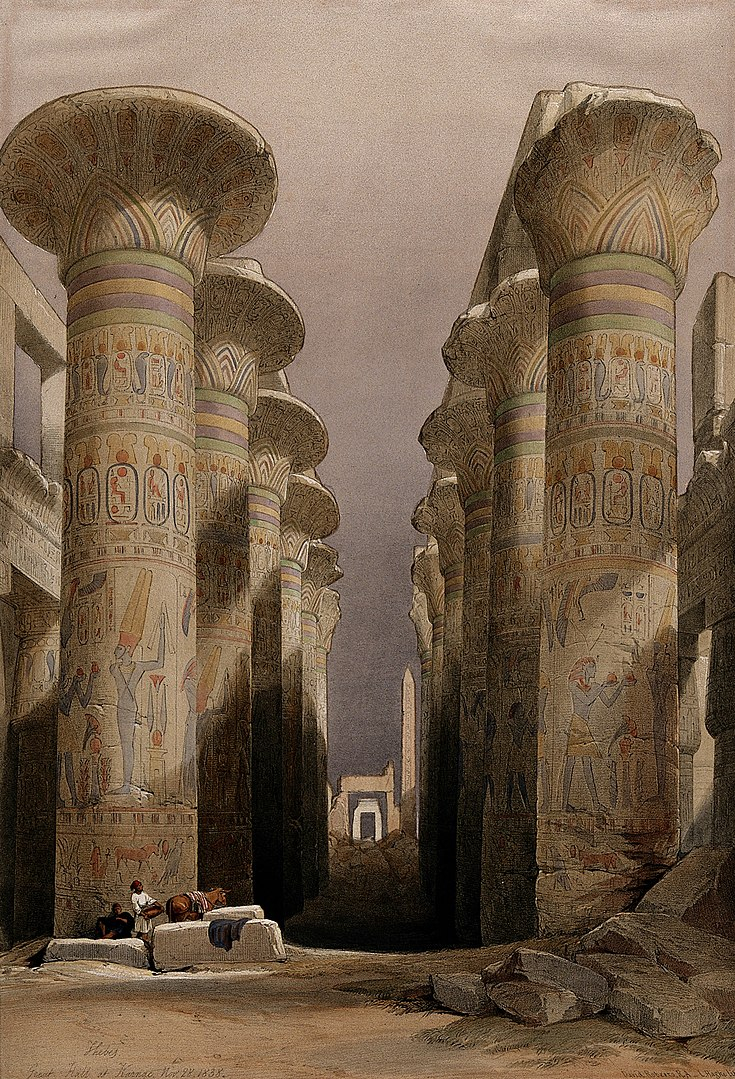
Thebes -en.wikipedia.org 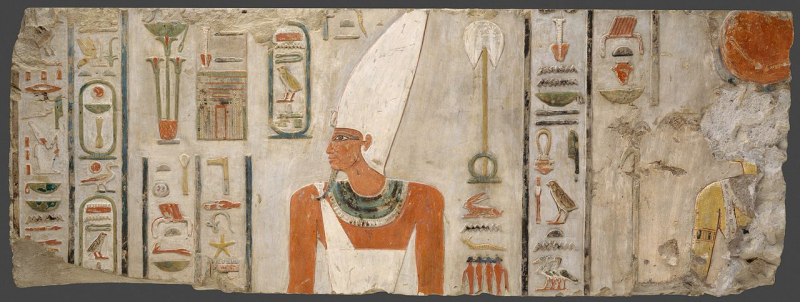
Mentuhotep II -en.wikipedia.org -
The Middle Kingdom of Egypt (also known as The Era of Reunification), one of the important Ancient Egyptian periods, was a period in Egyptian history that followed the First Intermediate Period of the political split. The Middle Kingdom lasted from 2040 to 1782 BC, from Egypt's reunification under Mentuhotep II in the Eleventh Dynasty until the end of the Twelfth Dynasty. Eleventh Dynasty rulers reigned from Thebes, whereas Twelfth Dynasty kings ruled from el-Lisht.
The Middle Kingdom's kings restored the country's stability and prosperity, sparking a revival of art, literature, and enormous construction projects. The kings of the Twelfth Dynasty launched an ambitious land reclamation and irrigation program from Itjtawy in order to boost agricultural productivity in the region. Furthermore, the military reclaimed territory in Nubia rich in quarries and gold mines, while workmen constructed the "Walls of the Ruler" in the Eastern Delta to defend against foreign attack.
The nation's population, arts, and religion flourished once the monarchs secured the country militarily and politically, and with immense agricultural and mineral wealth at their disposal. In contrast to the elitist attitudes toward the gods in the Old Kingdom, the Middle Kingdom saw an upsurge in demonstrations of personal piety. Themes and characters in Middle Kingdom literature were complex, and they were expressed in a confident, eloquent style. Relief and portrait sculpture of the time captured subtle, distinctive features that achieved unprecedented technical heights.
Amenemhat III, the Middle Kingdom's final great ruler, permitted Semitic-speaking Canaanite settlers from the Near East to settle in the Delta region to provide a sufficient labor force for his particularly vigorous mining and building activities. However, his ambitious building and mining projects, along with severe Nile floods later in his reign, strained the economy and prompted the steady fall into the Second Intermediate Period during the later Thirteenth and Fourteenth dynasties.
Period: 2040-1782 BC
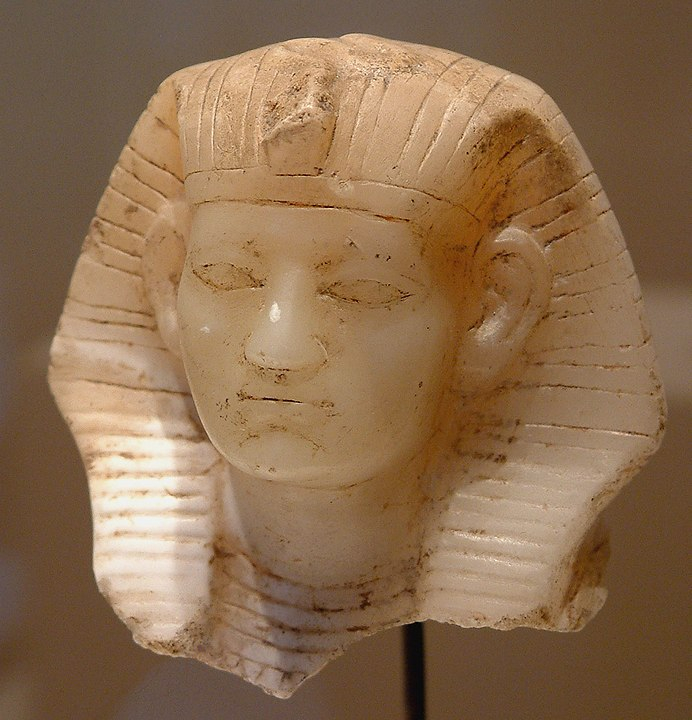
Amenemhat III -en.wikipedia.org 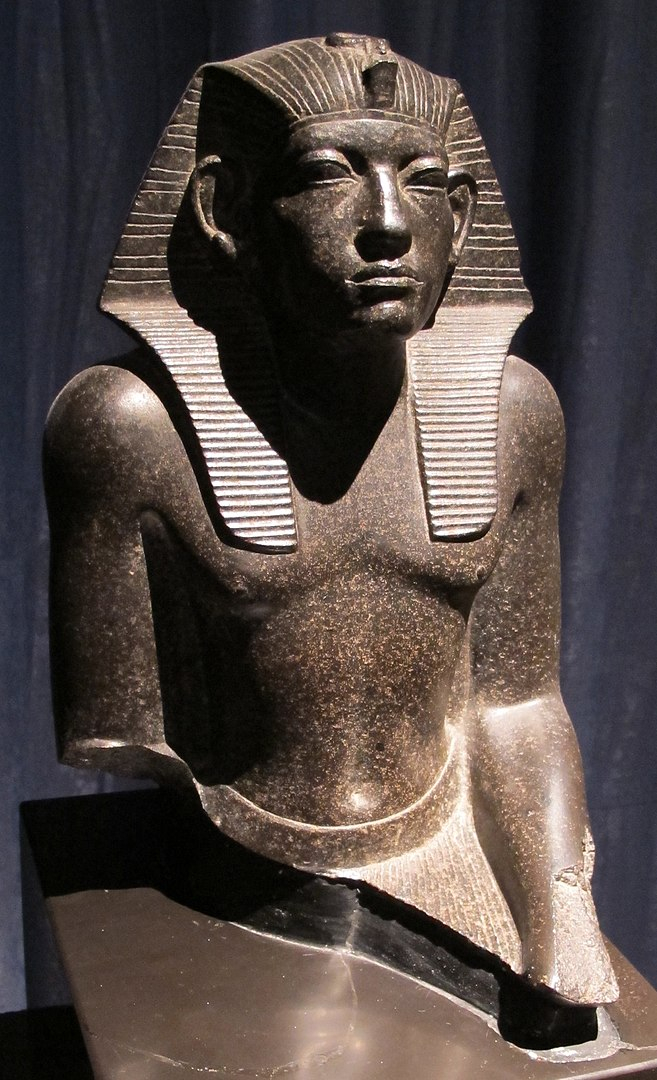
Statue of Amenemhat III -en.wikipedia.org -
Between the end of the Middle Kingdom and the beginning of the New Kingdom, Ancient Egypt experienced a second period of disorder known as the Second Intermediate Period. Hanns Stock, a German Egyptologist, created the name "Second Intermediate Period" in 1942. It is most remembered as the period during which the Hyksos people of West Asia first appeared in Egypt, and whose reign included the 15th Dynasty, which was founded by a monarch named Salitis, according to Manetho's Aegyptiaca.
As the power of the Middle Kingdom rulers waned around 1785 BC, the Hyksos, a Western Asian population who had already settled in the Delta, seized control of Egypt and founded their capital at Avaris, forcing the former central government to evacuate to Thebes. The king was viewed as a vassal who owed tribute. The Hyksos ("foreign rulers") kept Egyptian models of government and regarded themselves as kings, thus incorporating Egyptian components into their civilization. They and other invaders introduced new weapons into Egypt, including the composite bow and the horse-drawn chariot.
The native Theban rulers were stuck between the Canaanite Hyksos to the north and the Hyksos' Nubian allies, the Kushites, to the south after retreating south. After years of vassalage, Thebes amassed enough might to fight the Hyksos in a 30-year struggle that lasted until 1555 BC. The kings Seqenenre Tao II and Kamose eventually defeated the Nubians to Egypt's south but failed to destroy the Hyksos. That task was given to Kamose's successor, Ahmose I, who successfully launched a series of operations that effectively ended the Hyksos' position in Egypt. He founded a new dynasty, and throughout the New Kingdom, the military became a top concern for the kings as they strove to expand Egypt's frontiers and seize control of the Near East.
Period: 1674–1549 BC
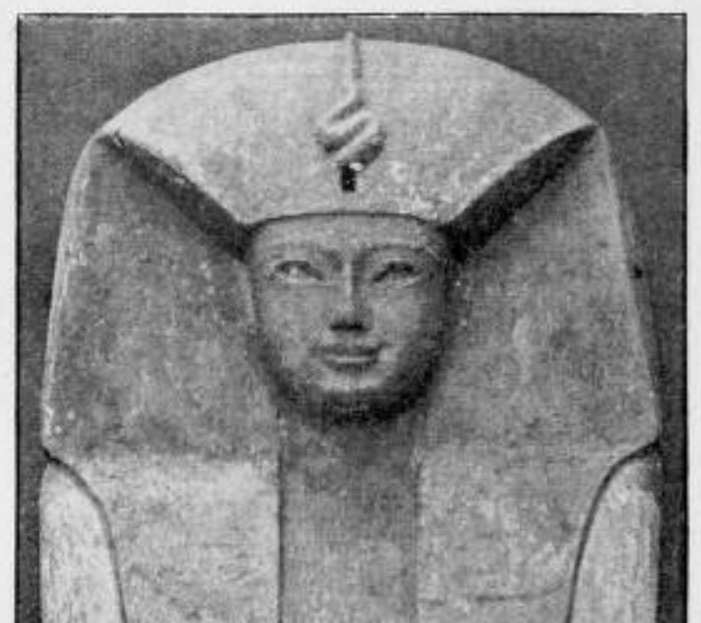
Seqenenre Tao -en.wikipedia.org 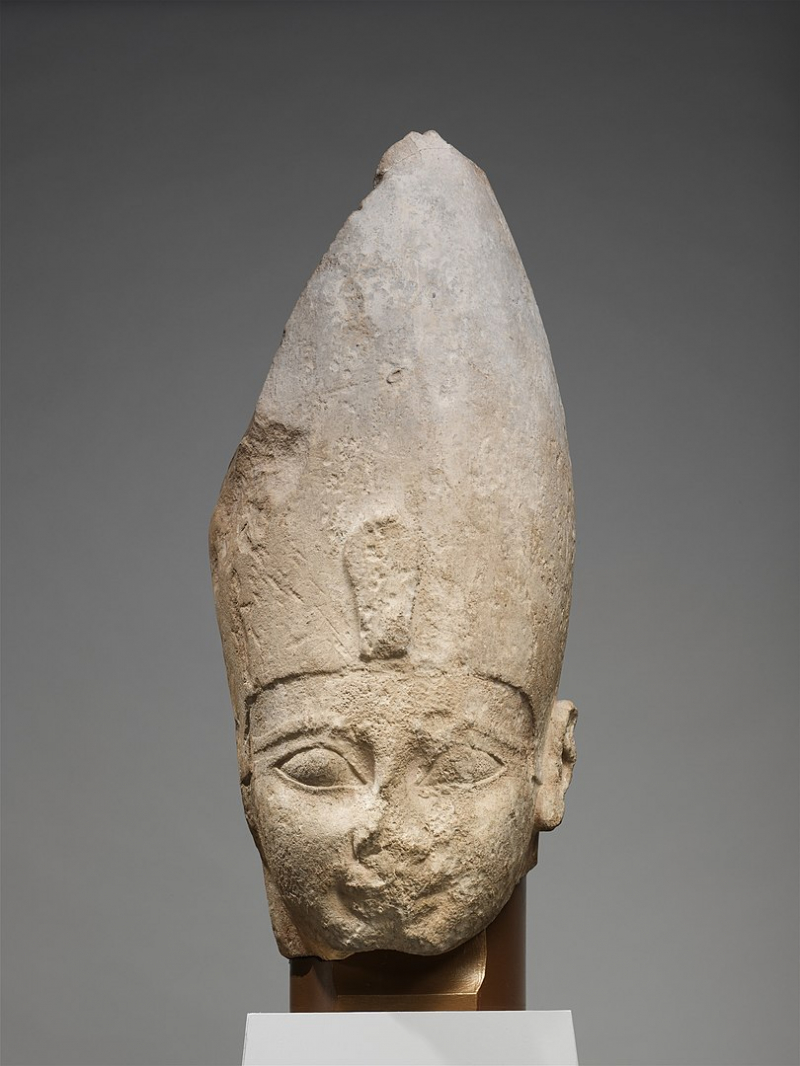
A fragmentary statue of Ahmose I -en.wikipedia.org -
The New Kingdom, one of the famous Ancient Egyptian periods, often known as the Egyptian Empire, was the time in ancient Egyptian history between the sixteenth and eleventh centuries BC, encompassing Egypt's Eighteenth, Nineteenth, and Twentieth dynasties. The Second Intermediate Period was followed by the New Kingdom, which was followed by the Third Intermediate Period. It was Egypt's most prosperous period and the pinnacle of its power.
The term "New Kingdom" was coined in 1845 by German Egyptologist Baron von Bunsen as one of three "golden ages," and its definition evolved dramatically over the nineteenth and twentieth centuries. The Ramesside period refers to the last part of this period, which was ruled by the Nineteenth and Twentieth dynasties (1292-1069 BC). It is called after Ramesses I, the founder of the Nineteenth Dynasty, and the eleven pharaohs who bore the name Ramesses.
The New Kingdom saw Egypt grow in the Levant, possibly as a result of the Hyksos' foreign control during the Second Intermediate Period, and it was at this time that Egypt gained its greatest territorial extent. Similarly, in reaction to Kushite incursions in the seventeenth century BC during the Second Intermediate Period, the rulers of the New Kingdom felt obligated to expand far south into Nubia and hold vast areas in the Near East.
Following Ramesses III's death, his successors fought for years. Three of his sons succeeded him Ramesses IV, Ramesses VI, and Ramesses VIII. Egypt was increasingly plagued by droughts, below-normal Nile flow, starvation, public unrest, and state corruption. The power of the dynasty's last pharaoh, Ramesses XI, weakened to the point where the High Priests of Amun at Thebes became de facto rulers of Upper Egypt in the south, while Smendes governed Lower Egypt in the north, even before Ramesses XI's death. At Tanis, Smendes established the twenty-first dynasty.
Period: 1549–1069 BC
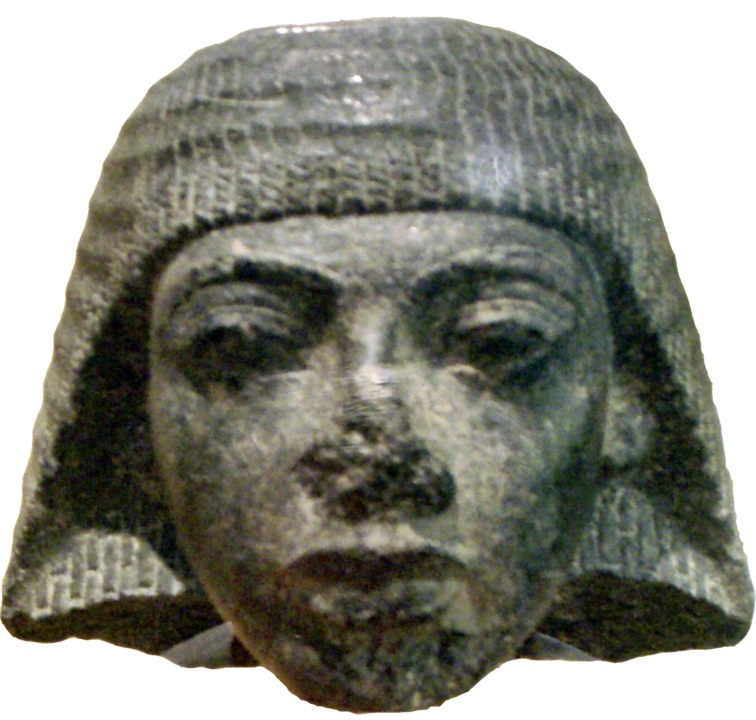
Ramesses I -en.wikipedia.org 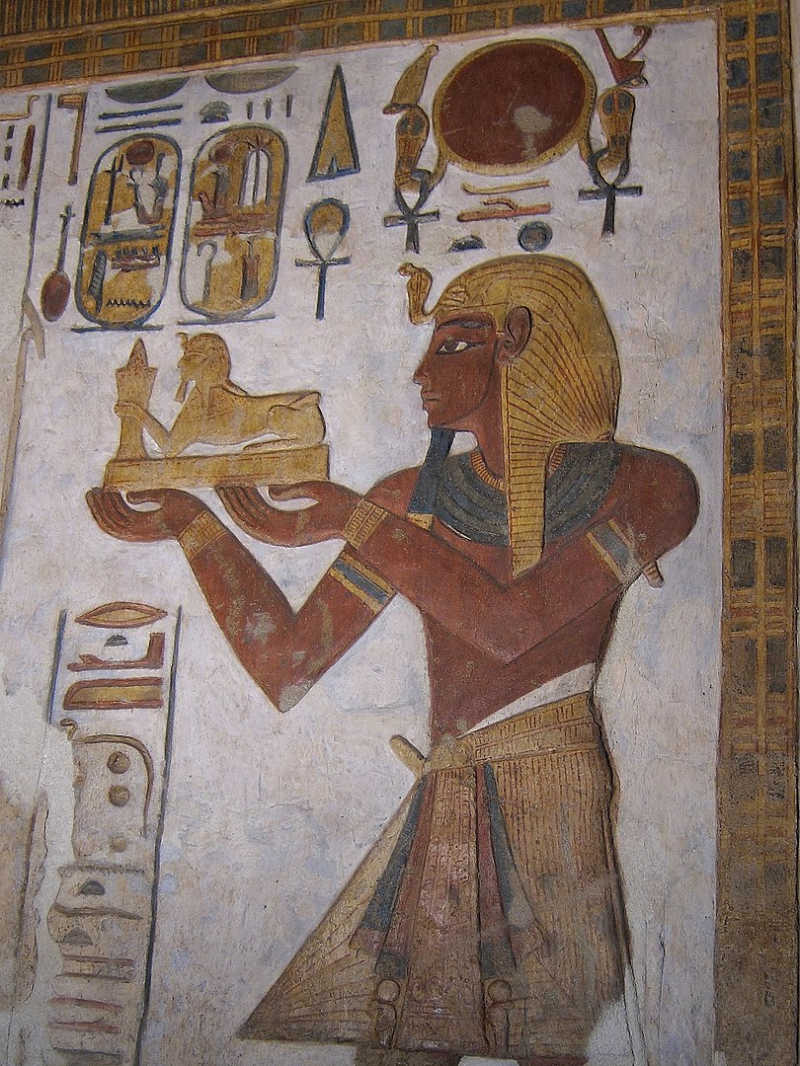
Ramesses III -en.wikipedia.org -
The Third Intermediate Period in ancient Egypt began with the death of Pharaoh Ramesses XI in 1070 BC, bringing the New Kingdom to an end, and was subsequently followed by the Late Period. The latter era is thought to have begun with the establishment of the Twenty-Sixth Dynasty by Psamtik I in 664 BC, following the departure of the Nubian Kushite monarchs of the Twenty-fifth Dynasty after they were forced out by the Assyrians under King Ashurbanipal. Kenneth Kitchen, a British Egyptologist, invented the term "Third Intermediate Period" in 1978.
Following the death of Ramesses XI in 1078 BC, Smendes took control of Egypt's northern region, reigning from Tanis. The High Priests of Amun at Thebes effectively dominated the south, recognizing Smendes only in name. Libyans were settling in the western delta at the time, and chieftains of these settlers began to increase their autonomy. Under Shoshenq I, Libyan rulers acquired control of the delta, establishing the so-called Libyan or Bubastite dynasty that would dominate for the next 200 years. Shoshenq also achieved control of southern Egypt by appointing members of his family to significant priestly positions. As a rival monarchy in the delta developed in Leontopolis and the Kushites threatened from the south, Libyan control began to weaken.
Egypt's global prestige plummeted toward the end of the Third Intermediate Period. Its foreign allies had fallen into the Assyrian sphere of influence, and war between the two states had become unavoidable by 700 BC. The Assyrian conquest of Egypt began between 671 and 667 BC. Both Taharqa's and his successor, Tanutamun's administrations were marked by persistent conflict with the Assyrians, against whom Egypt won significant triumphs. Eventually, the Assyrians drove the Kushites back into Nubia, seized Memphis, and sacked Thebes' temples.
Period: 1070–653 BC
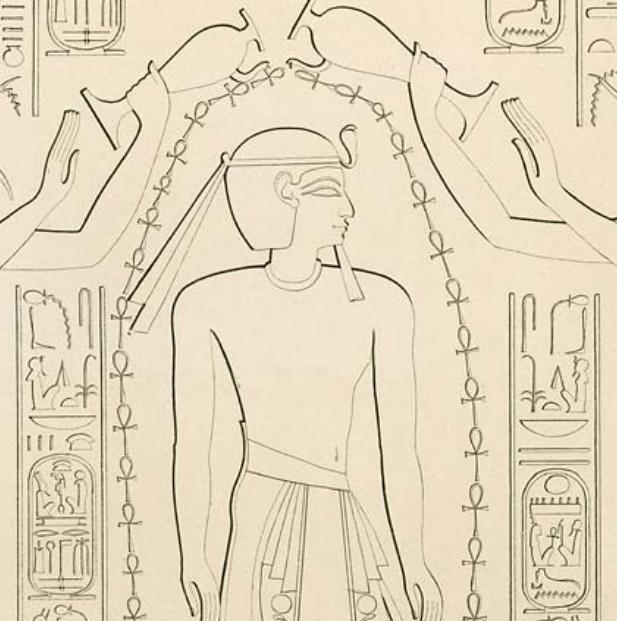
Ramesses XI -en.wikipedia.org 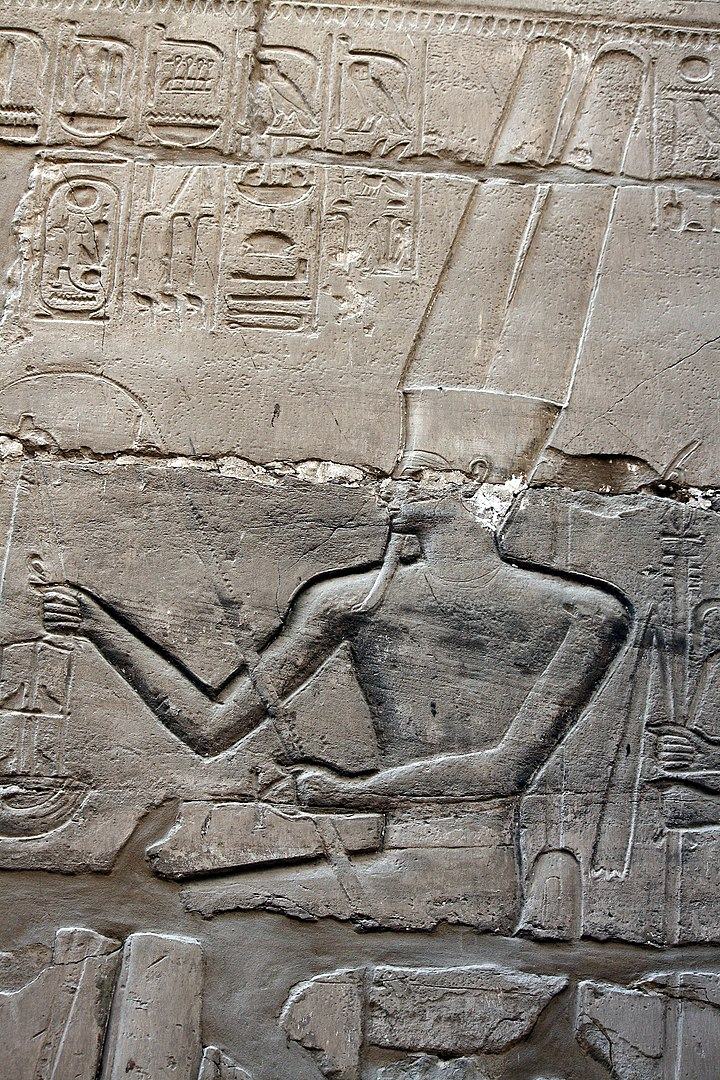
The god Amun in Karnak -en.wikipedia.org -
The Late Period of Ancient Egypt refers to the final flowering of native Egyptian kings following the Third Intermediate Period in the 26th Saite Dynasty founded by Psamtik I, but it also encompasses the period of Achaemenid Persian dominance over Egypt following Cambyses II's conquest in 525 BC. The Late Period lasted from 664 BC to 332 BC, after a period of foreign rule by the Nubian 25th Dynasty and beginning with a brief period of Neo-Assyrian suzerainty, with Psamtik I ruling as their vassal at first. The period concluded with Alexander the Great's conquests of the Persian Empire and the foundation of the Ptolemaic dynasty by his general Ptolemy I Soter, one of the Hellenistic diadochi from Macedon in northern Greece. The age of Hellenistic Egypt began with the Macedonian Greek conquest in the later half of the 4th century BC.
The Assyrians handed over power of Egypt to a succession of vassals known as the Saite monarchs of the Twenty-Sixth Dynasty. By 653 BC, the Saite king Psamtik I had defeated the Assyrians with the assistance of Greek mercenaries hired to construct Egypt's first navy. Greek influence grew significantly as the city-state of Naucratis became the Nile Delta's home for Greeks. The Saite kings based in the new capital of Sais saw a brief but fervent recovery in the economy and culture, but in 525 BC, the mighty Persians led by Cambyses II launched their conquest of Egypt, eventually capturing Pharaoh Psamtik III at the Battle of Pelusium. Cambyses II took the official title of pharaoh, but ruled Egypt from Iran, leaving Egypt in the hands of a satrap. The 5th century BC saw a few successful revolts against the Persians, but Egypt was never able to completely oust the Persians.
Following Persia's acquisition, Egypt was joined with Cyprus and Phoenicia in the Achaemenid Persian Empire's sixth satrapy. This first period of Persian rule over Egypt, known as the Twenty-Seventh Dynasty, came to an end in 402 BC, when Egypt recovered independence under a series of native dynasties. The Thirtieth Dynasty, which ended with the reign of Nectanebo II, was the final native royal house of ancient Egypt. The Thirty-First Dynasty, a brief restoration of Persian authority, began in 343 BC, but shortly after, in 332 BC, the Persian monarch Mazaces turned Egypt up to Alexander the Great without a fight.
Period: 664 - 332 BC
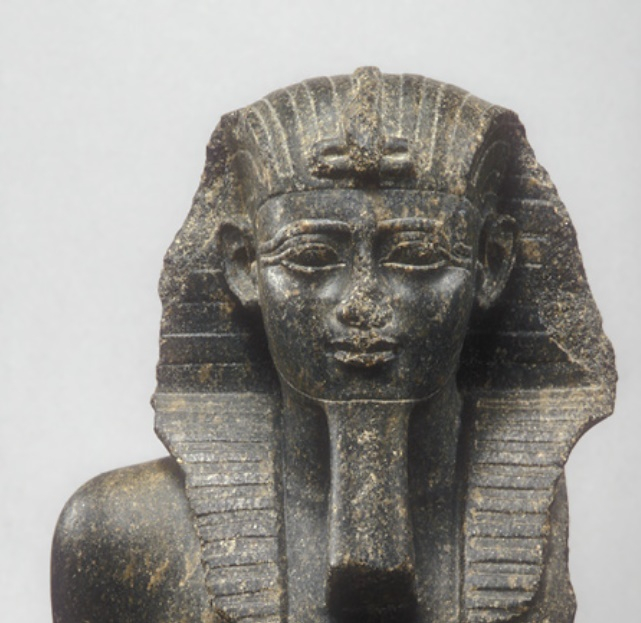
the Saite king Psamtik I -en.wikipedia.org 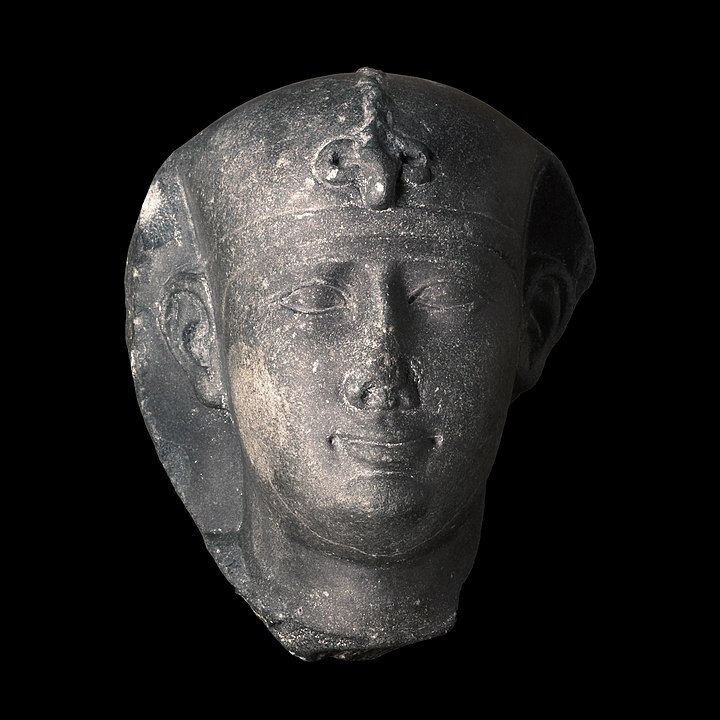
Head of Nectanebo II -en.wikipedia.org











